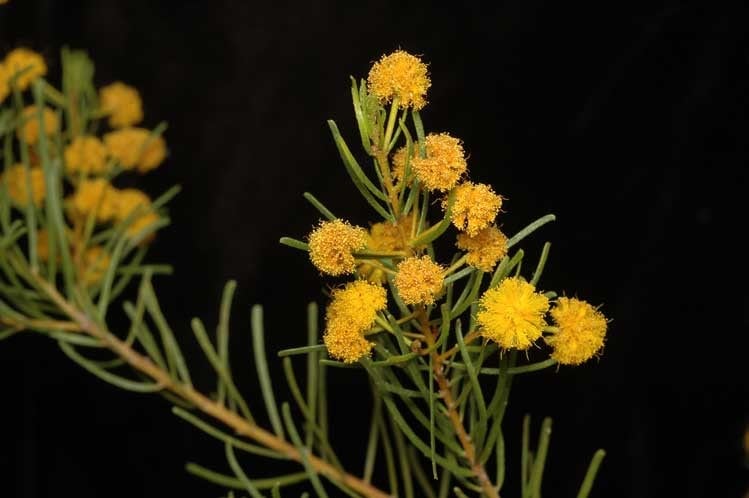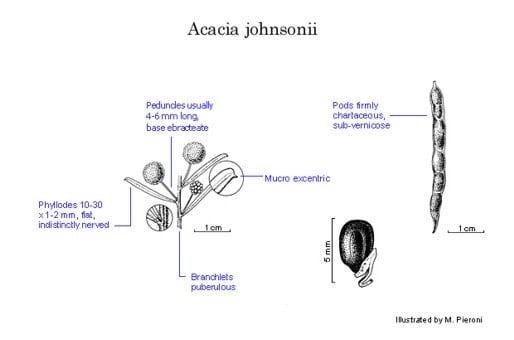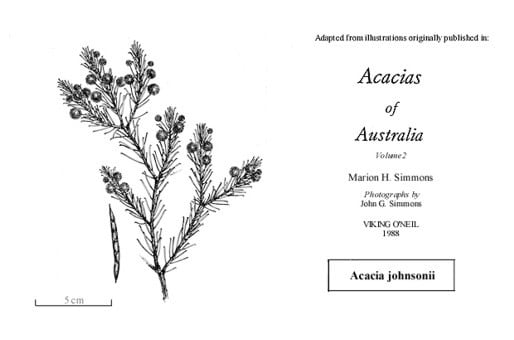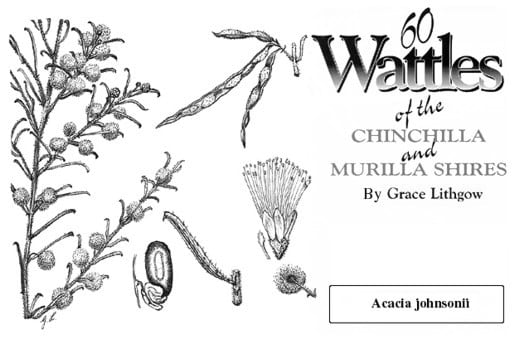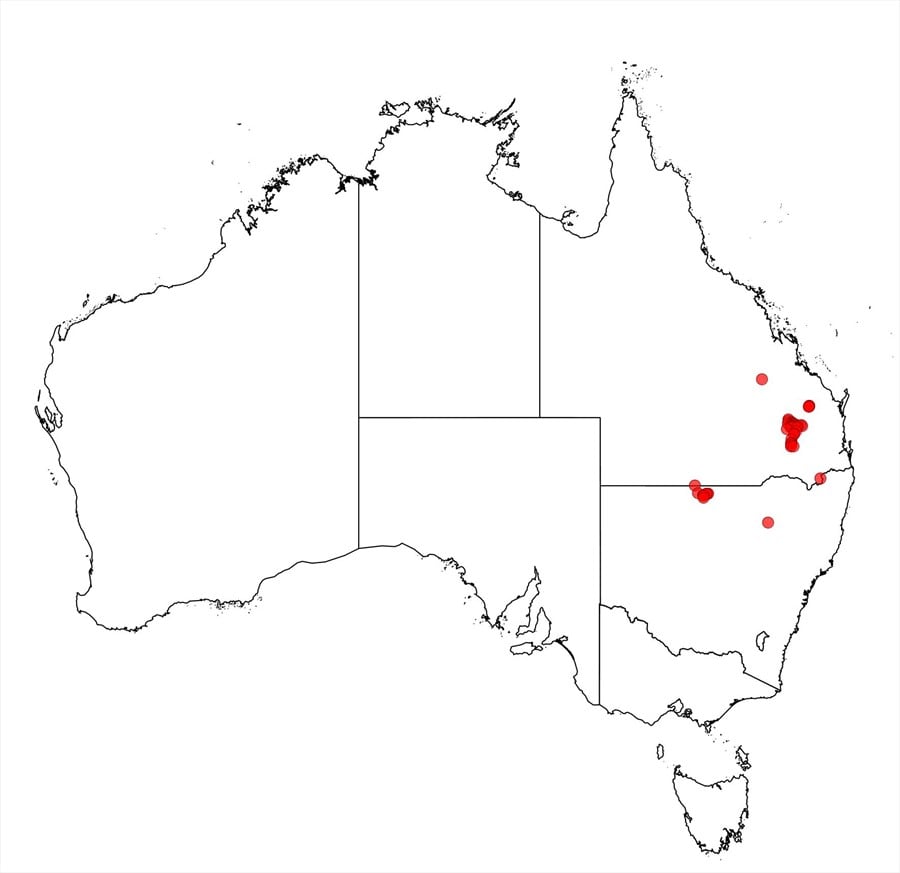Acacia johnsonii Pedley
WATTLE
Acacias of Australia
Common Name
Gereera Wattle, Geereva Wattle
Family
Fabaceae
Distribution
Occurring in south-eastern Qld in the Chinchilla area and at Jericho. Occurs also on the North Western Plains of N.S.W. near Enngonia.
Description
Shrub 1.5–3 m high, branching from base. Branchlets not prominently ribbed, puberulous, slightly resinous. Phyllodes patent to erect, linear to narrowly linear, straight to shallowly incurved, flat, 1–3 cm long, 1–2 mm wide, commonly narrowed at base, excentrically and obliquely mucronulate to rostellate, green, glabrous or subglabrous, obscurely 1–3-nerved; midrib sometimes ±pronounced; gland minute, basal, sometimes with another at base of mucro. Inflorescences simple, single in upper axils; peduncles 4–6 (–9) mm long, glabrous to puberulous, ebracteate at base; heads globular, (15–) 20–30-flowered, golden, slightly resinous. Flowers 5-merous; sepals 2/3–3/4-united, acute. Pods to 7 cm long, 3–4 mm wide, firmly chartaceous, reddish brown, glabrous, subvernicose. Seeds longitudinal, oblong, 2.5–4 mm long; aril oblique.
Habitat
Common in sand in shrubby open forest near Chinchilla, Qld, and in N.S.W. uncommon on sandplains in spinifex communities.
Specimens
Qld: Jericho, June 1913, J.L.Boorman (NSW); Waaje Tower Rd, Barakula Forest, 11 Aug. 1986, V.Hando 2 (PERTH). N.S.W.: ‘Nulty Springs’, Enngonia, G.M.Cunningham 481 (NSW).
Notes
Acacia johnsonii together with a number of mainly Qld species constitute the suite of closely related species referred to here informally as the ‘A. johnsonii group’ (i.e. A. barakulensis, A. burbidgeae, A. calantha, A. eremophiloides, A. gnidium, A. hendersonii, A. hockingsii, A. islana, A. ixodes, A. lauta, A. pilligaensis, A. resinicostata and A. rubricola). These species are all resinous to some degree, and have non-racemose inflorescences with the peduncles lacking a basal bract. This group has affinities to A. brachyclada, A. handonis and A. dictyophleba and its allies. Acacia helmsiana, which is currently placed in the ‘A. wilhelmiana group’, may perhaps be better placed in the ‘A. johnsonii group’.
Acacia johnsonii is particularly closely related to A. lauta and A. rubicola. It sometimes resembles narrow phyllode forms of A. wilhelmiana but the relationship is not particularly close.
Phyllodes of A. johnsonii are variable but always rather short, flat and without a broadened lower margin as in A. burbidgeae. A specimen (H.A.Kerswell s.n., BRI) with slightly longer than normal peduncles (9 mm) occurs in the vicinity of the Shotover Ra., north of the main occurrence of the species.
FOA Reference
Data derived from Flora of Australia Volumes 11A (2001), 11B (2001) and 12 (1998), products of ABRS, ©Commonwealth of Australia
Author
Minor edits by B.R.Maslin
B.R.Maslin
This identification key and fact sheets are available as a mobile application:
URL: https://apps.lucidcentral.org/wattle/
© Copyright 2018. All rights reserved.
